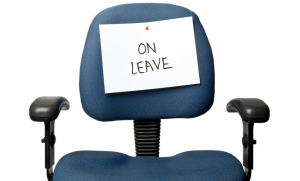Lessons for Employers: Don’t Give Creative Lawyers Ammunition to Create Equitable Rights under CFRA

 In the recent case of Olofsson v. Mission Linen Supply (12/13/12), we see the creative strategies used by plaintiff’s counsel when the facts do not support the violation of employment law. In the case, a route driver was terminated when he took leave to care for his mother in Sweden. It was undisputed that the leave was not protected under the California Family Rights Act (CFRA). It was not protected because Olofsson did not meet the eligibility requirement of working at least 1,250 hours in the 12 months preceding the requested leave. End of story, right? No.
In the recent case of Olofsson v. Mission Linen Supply (12/13/12), we see the creative strategies used by plaintiff’s counsel when the facts do not support the violation of employment law. In the case, a route driver was terminated when he took leave to care for his mother in Sweden. It was undisputed that the leave was not protected under the California Family Rights Act (CFRA). It was not protected because Olofsson did not meet the eligibility requirement of working at least 1,250 hours in the 12 months preceding the requested leave. End of story, right? No.
Olofsson’s attorney argued two alternative theories. First, that Olofsson was retaliated against because he requested the leave. Second, that, under principles of equity, Olofsson should be granted the protections of the CFRA. It was this second ground that the court decided and which provides valuable lessons for employers.
Upon making the request for time off to care for his mother, Olofsson had a variety of conversations about the leave with several different people within the company. He was told by his supervisor that it would be okay to take the leave but that Olofsson had to fill out some forms. Seven days later he turned in the forms on which he marked the “employer approved” checkbox. He was told by the payroll clerk receiving the forms that the leave was not approved and she corrected the checkbox with whiteout in front of Olofsson. Nine days later Olofsson turned in a letter from his mother’s doctor as medical certification. The letter, however, was not written on letterhead. The payroll clerk and Olofsson’s manager were concerned it might not be legitimate. They passed it on to the regional HR manager asking that he verify the legitimacy of the letter. The HR manager wanted Olofsson’s doctor to use the official government certification form in order to be consistent with the company’s practices. The form was provided to several days later. A week later, Olofsson turned in the official form signed by the doctor. At this point he was told that the leave request was denied because he did not have sufficient work hours to be eligible for protected CFRA leave. Olofsson said he was going to take the leave anyway because it was only a matter of days before his mother’s temecula facial oral surgery and need for care. The planned trip to Sweden could not be changed. He was terminated for taking unapproved leave.
Olofsson’s attorney argued that the communications with Olofsson led him to believe that he was eligible to take the leave, and the company should be stopped from defending the case on the basis of the 1,250 hours requirement. Not only had his manager told Olofsson that he could take the leave, the company had multiple conversations with Olofsson in getting all the appropriate paperwork done and had even assigned a replacement driver to train with Olofsson. While there were reasons why the hours calculation was not simple, there was not an excuse for why it was not conducted at or near the time of Olofsson’s original request for time off. The court stated:
We are troubled by the fact that Mission Linen waited longer than may have been reasonably necessary to verify whether Olofsson had accumulated the 1,250-hour threshold to qualify for family leave. Had that process occurred within the 10-day period to “respond to a leave request,” his ineligibility would have been readily apparent and a quick denial may have avoided the problems that sparked this litigation.
The court was right. Had the employer been more organized and careful, there likely would have been no litigation. The number of people involved on the company side should have been reduced. They should have coordinately more carefully. The communications with Olofsson should have been planned. And, everyone involved should have had better training. That all take time and money. But, does it take more than the time and money involved in defending the lawsuit?
The detailed factual background and court’s decision can be reviewed at http://www.courts.ca.gov/opinions/documents/A131471.PDF
